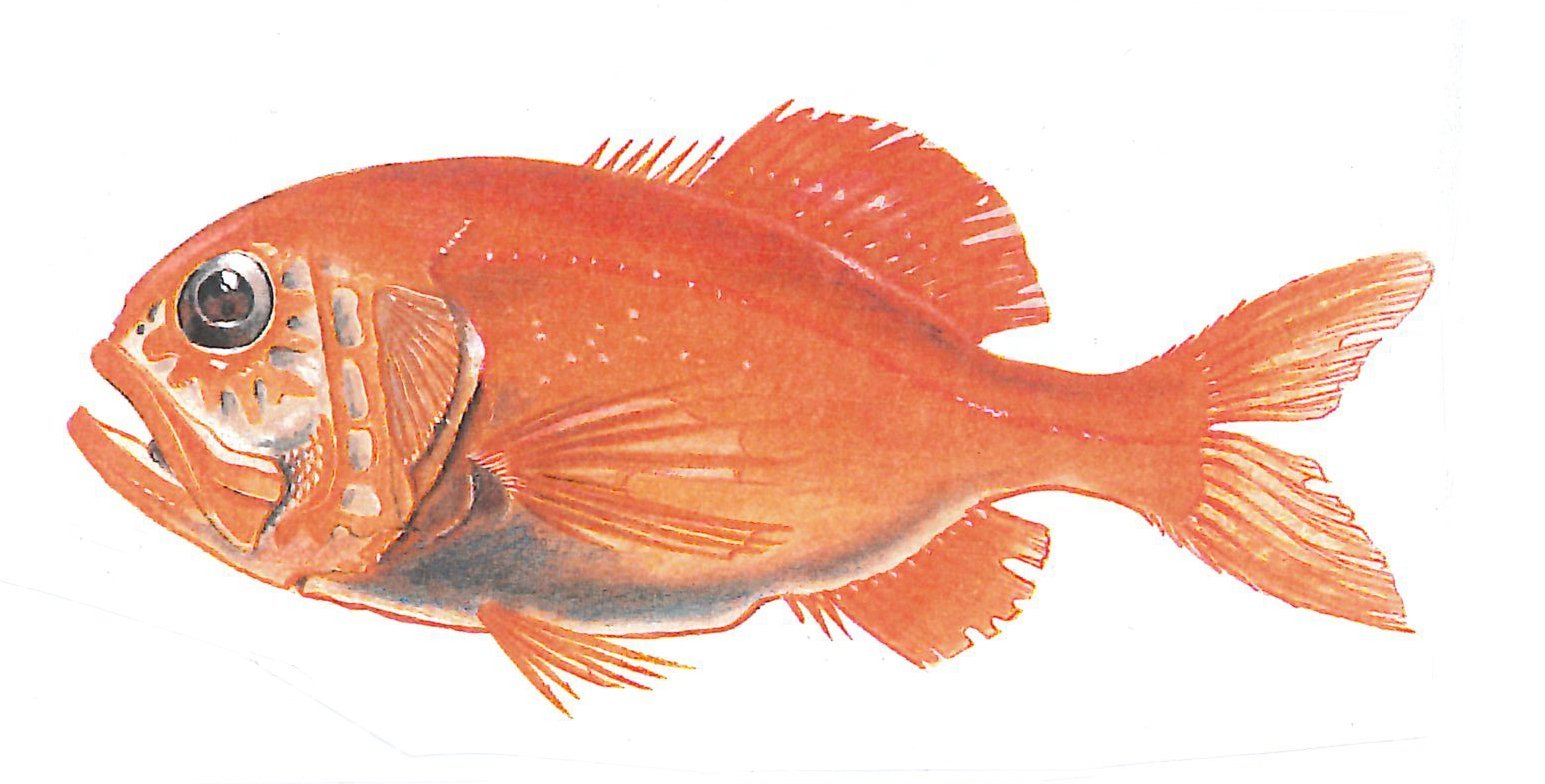
It has a conspicuous series of large scales along the lateral line and serrated scales along the belly ridge. When live, the body and fins are bright red, with silver tinting on the flanks. The body colour changes to orange after death.

The orange roughy is now a favoured food fish. I was shocked to see it is STILL being marketed here as the fish of the day and the most desirable fish to eat, when new evidence shows this is likely to push it to collapse.
A recent Ministry for Primary Industries review has estimated the orange roughy population on the East and South Chatham Rise to be only 8% to 18% of its original natural biomass.
The fishing industry has tended to pursue commercially one fish species after another, driving a particular species to collapse or near collapse before targeting another, replacement, species. Several fish species have been decimated in this way; in New Zealand, starting with the grayling - a native freshwater fish driven to extinction in the 1920s.
It was relatively easy to drive a once-abundant freshwater fish to extinction. Our freshwaters are small. By comparison, the sea seems limitless. Yet the world’s 7.9 billion people are continuing to devastate and lay waste to the world’s oceans, including by pollution, plastics contamination, global heating and overfishing, with a number of marine species having been fished to collapse. Modern methods of oceanic fishing, with fishing fleets hauling kilometre-long nets, have caused the decline of numerous marine species, including the orange roughy.
It is now the season for bottom trawling and New Zealand’s fishing fleet is preparing to drag its heavy weighted nets across seamounts to catch fish, especially orange roughy. Orange roughy congregate on seamounts during the winter months to breed, which is when the bottom trawlers target them.
Bottom trawling destroys the coral habitats that function as breeding grounds for the orange roughy, a fish that lives in the slow lane. It develops very slowly, only becoming sexually mature at about 80 years old, and can live to well over 200 years old. As a result, orange roughy are being captured in bottom trawls before they can properly reproduce, and this is now pushing yet another fishery towards collapse.
Bottom trawling destroys the habitat for many marine species, and it is for this reason that various groups of concerned naturalists are calling on the government to ban bottom trawling on seamounts to protect fragile coral habitats and the various species dependent on them, including the orange roughy, and to protect overall ocean health as well.
New Zealand’s infamous experience with the grayling emphasises that the precipitously declining orange roughy should be protected immediately, before it is too late. You can help: take orange roughy off the menu.












